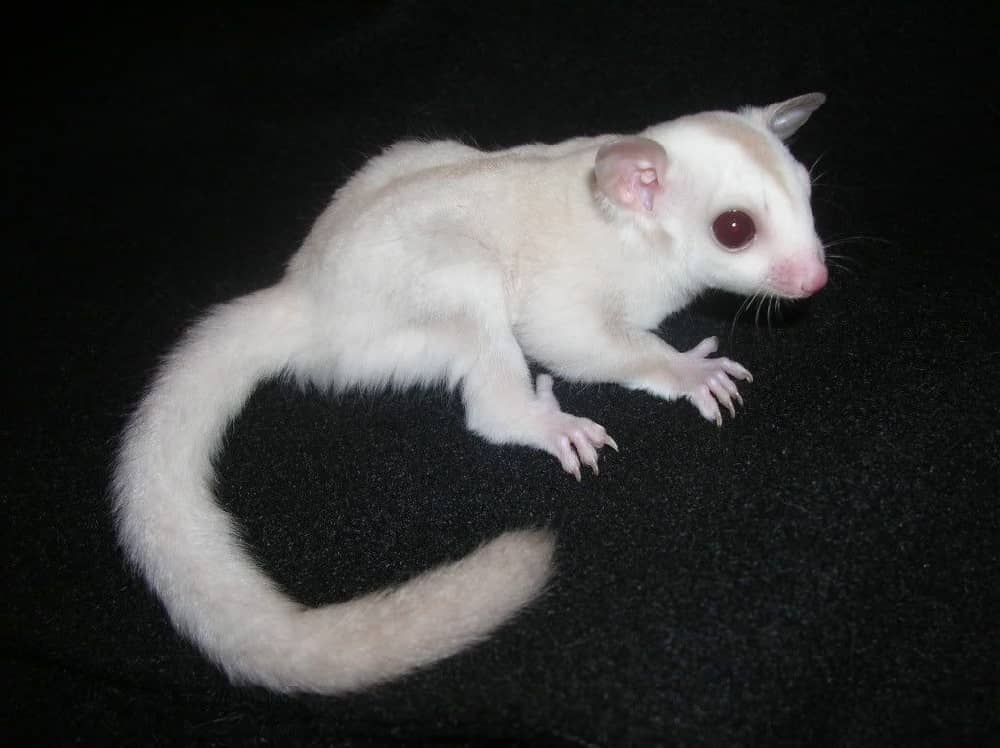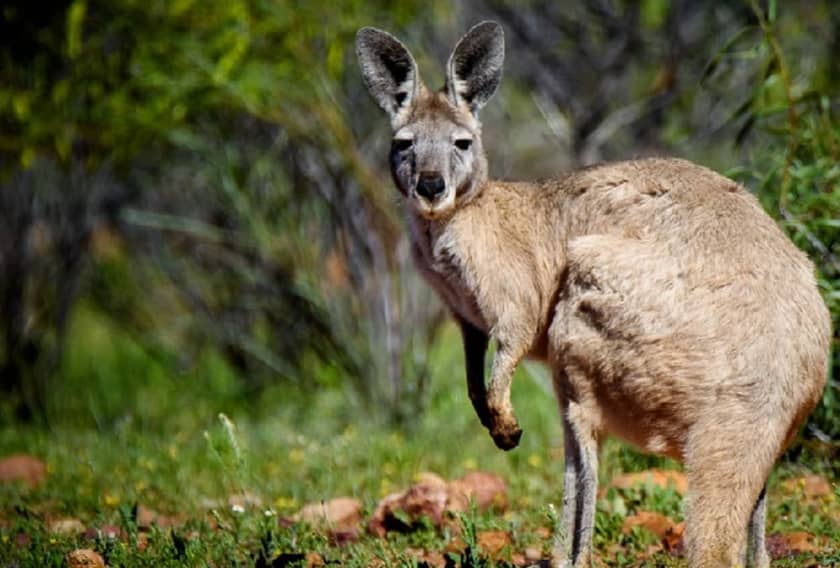The cost of owning a sugar glider is one of the important parameters to keep them as pets. These cute little marsupials are fun to watch and have a cool way of gliding around, but they need special care and can cost a lot.
A detailed analysis of its cost can clear your doubts and help you to control unnecessary expenses. This way, you’ll know what you’re getting into before you bring one home.
What are Sugar Gliders?
Sugar gliders are tiny night-loving marsupials from Australia and New Guinea. They have big eyes soft fur, and a special skin flap between their wrists and ankles that lets them soar through the air. These little guys love company and need a lot of attention to stay happy.

Legal considerations
Before thinking about how much sugar gliders cost, you need to know if you can own one. Some states don’t allow people to keep sugar gliders as pets. California and Alaska, for example, have banned them because they might harm the local environment. In other places, you may need to get a permit to own a sugar glider, which can make them more expensive. So, it’s important to look into the rules where you live before you decide to buy a sugar glider.
Costs Based on Different Breeds of Sugar Gliders
Interestingly, the breed of sugar glider you choose can impact your upfront and ongoing costs:
Standard Grey Sugar Glider:
This is the most common and affordable breed. They typically cost $200 to $500, with monthly expenses aligning with the estimates mentioned earlier.
Leucistic and Albino Sugar Gliders:
These rare breeds often cost between $1,000 and $3,000, although their monthly care costs are similar to standard grays. However, their genetic differences can sometimes lead to higher vet bills, particularly if they are prone to specific health conditions.

White Faced and Mosaic Sugar Gliders:
Slightly less expensive than albinos but still more costly than standard grays, these gliders may cost between $500 and $1,500. Monthly upkeep costs are comparable, though additional health monitoring may be needed depending on breeding.
Cost Based on Age and Training
Not only does the color, breed, or gender affect the cost of a sugar glider, but the age of a glider also matters.
Cost of Young Sugar Gliders:
The cost of a sugar glider can also vary on account of its age and level of training. The young sugar gliders are easy to tame and acclimatize to human touch as compared to adults. Therefore young sugar gliders come at a higher price and baby sugar gliders usually cost $300 to $500.
Cost of Adult Sugar Gliders:
On the other hand, grown-up sugar gliders tend to be cheaper, with prices from $150 to $300. Moreover, Sugar gliders come with different price tags depending on their age, color, and the breeder’s reputation.

Initial Setup Costs
After you get your sugar glider, you need to make a good home for it. The costs to set everything up can grow fast. It can be somewhere in the range of $400 to $1000. You need to spend on Cage, bedding, food, toys, and other supplies.
Cage Costs:
Sugar gliders need a roomy cage to climb and glide in. A good cage should measure at least 24 inches wide, 36 inches high, and 24 inches deep. Plan to shell out between $175 and $400 for a high-quality cage that fits these sizes.
Accessories and Supplies:
Besides the cage, you’ll need several items to make a cozy home for your sugar glider:
Nesting Pouches: Sugar gliders need nesting pouches to relax and sleep. It may cost you around $10–$20 each.
Toys: The enrichment toys and activities can also cost you around $20–$50. You may need to replace the worn-out toys and give new ones to keep them mentally stimulated.
Food and Water Bowls: The ceramic food bowls and water bottles or bowls are a must for them. It may cost around $20–$50.
Bedding: Sugar gliders need soft bedding made up of paper or aspen shavings. This can cost you around $10. You need to shell out money for replacing it frequently.
Veterinary Care:
Regular visits to the vet are required to keep your sugar glider healthy. While they do not need vaccinations, you will want to plan on spending money for the following:
Annual Vet CheckUps: $100+ per glider
Emergency Vet Fund: It’s a good idea to have at least $500 stashed away for emergencies.
Pet Insurance:
Because exotic animals are more prone to become sick and require specialized medical treatment, veterinarian appointments are more costly. For this reason, purchasing pet insurance is a worthwhile investment. Some companies provide exotic pet insurance or veterinarian discount programs that can significantly lower the expense of owning sugar gliders as pets.
The sugar gliders are healthy creatures but an insurance plan for them can cut down emergency veterinarian expenditures to a greater extent. A monthly plan can cost you around $23 for a pair of sugar gliders.
Travel Carrier:
If you plan to carry your sugar glider on a trip, you will need a travel carrier that will cost you around $30–$100. For local travelling, you can take it in a carrying pouch.

Upkeep Costs
After you’ve set everything up, remember the regular costs of caring for sugar gliders.
Food Expenses
In captivity, they require a well-balanced food. You should continue to feed them 25% fruits, 25% vegetables, and 50% gut-loaded insects that provide their protein needs. They take pleasure in eating fresh produce such as melons, apples, and grapes; veggies like sweet potatoes and carrots; and protein sources like boiled eggs, mealworms, and earthworms. Their meal includes:
- Pellets made just for sugar gliders
- Fresh fruit and veggies
- Protein like mealworms or crickets

Feeding a pair of sugar gliders costs about $25 to $50 monthly. This depends on what you choose to feed them and how easy it is to get fresh produce.
Cage Maintenance
Sugar gliders are messy creatures that urinate and defecate in their cage, so the cage needs to be cleaned regularly. Regular cleaning of the cage prevents odors and ensures a healthy environment.
Cleaning Supplies
Keeping the environment clean is crucial to your sugar gliders’ health. Cleaning supplies may cost you $5 per month.
Bonding and Social Needs
The Sugar Glider is an animal that is very social and needs much interaction to be healthy. It’s highly recommended to have at least a pair so they won’t get too lonely; that causes behavioral problems. If you do take two home, the initial cost effectively doubles, but that investment is vital for keeping them sane.
Care Requirements
Sugar gliders require a little more specialized care than many of the very common pets. Listed here are some key areas of consideration:
GliderProofing Your Home
The “gliderproofing” process involves making your home safe for your sugar glider from harm. This includes:
- Shutting the toilet lids
- Locking doors and windows
- Keeping chemicals and medicines out of the way
- Blocking little hiding places
Bonding Process
Taming your sugar glider requires some time and patience. The best time in which to bond them is within the first 8-12 months of their lives. During this period of their lives, regular handling and contact build trust and affection between you and your pet. For interaction, you need a tent time with your pet.

Grooming Requirements
Although sugar gliders manicure themselves, it’s important to regularly clip their nails to avoid harm. A nail trimmer and a mitt should be included in their grooming kit.
Adoption: Reduce the cost of Sugar Gliders
If you’re trying to cut down on upfront expenses, getting a sugar glider from a rescue group can be a good choice. Adoption fees change, but they’re cheaper than buying from a breeder. Also when you adopt a sugar glider, you give a home to an animal that needs one.
Breeder Selection
When buying a sugar glider, finding a trustworthy breeder is key. A good breeder will offer health guarantees, share info about the animal’s family history, and advise on how to care for it. The breeder should be a USDA-licensed breeder.
It’s a good idea to visit the breeder in person to check that the animals live in a healthy place. Be careful when buying online, as you might not get the same assurances about the animal’s health and quality of life.
Other Potential Expenses
Pet Insurance: Pet insurance cuts down veterinary expenditures but it can vary depending upon the medical condition of your pet.
Spaying or Neutering
The spaying or neutering of your gliders can keep your gliders in optimum health. The cost of these procedures ranges from $100-$200. Females have two uteri and hence it is quite an invasive and complicated procedure for them.
Dental Cleaning or Vaccinations
The sugar gliders have a sweet tooth and tartar develops at a fast rate. They need dental cleaning to prevent detrimental effects.
Medical Emergency
Though sugar gliders are generally healthy pets, you may need to shell out a hefty amount in case of a medical emergency. The sugar glider can develop Diabetes Mellitus, eye disorders, and Tumors which may escalate your expenditure.

Local Permit Expense
If you live in a state where a permit is required for keeping a sugar glider as a pet, you need to spend around $15-$20.
Travel Expenses
Because gliders are little marsupials, they make great travel companions, which is why many owners want to travel with them. To keep them entertained during the journey, you will need to prepare a travel cage and other travel-related materials like a water bottle, food bowl, and some toys, which will cost you between $50 and $60.Specialized pelleted food is a good option while traveling.
Moreover, you will need a fleece-wrapped heated hand on one side of the crate to provide warmth during traveling in winter. If you are commuting in summer then allow them to access a tiny, plastic, fleece-wrapped refrigerated lunchbox cooler on one side. These expenses can add up to nearly $200. Fortunately, compared to traveling with other pets like cats or dogs, these things take up relatively little room.
Money-saving Tips to Reduce the Cost of Sugar Gliders
There are some of the smart ways to reduce the expenses of keeping a sugar glider as a pet. Some of the substantial ways are:
Shop Smart:
You can bulk-buy some of the articles that are regularly required and small packaging is expensive. This can include cleaning supplies, commercial food pellets, and bedding.
DIY Cage Accessories:
You can create its thriving space interesting and enriching through some handmade toys. It can include plastic chains, paper rolls, empty containers, and small baskets that can be hung or lined up with fleece.

Homemade Diet:
It would be great if you provided them with a homemade fresh diet including fresh fruits, vegetables, cooked eggs, or chicken instead of commercial pellets.
Reduce Vet Cost:
To keep your sugar glider healthy, you should feed it a proper diet, and maintain cleaning of its cage. This will help in reducing common health problems and hence vet visits. Moreover, you can look for yearly plans offered by the veterinarian that will effectively reduce costs.
Housing hacks:
For sleeping, sugar gliders use fleece pouches. Creating your pouches from cheap fleece fabric is far less expensive than purchasing them from pet supply stores. Use reusable, easily replaceable paper towels or recycled newspaper in place of pricey bedding.

Total Annual Costs
The total annual cost for a pair of sugar gliders would be approximately $925 to $1,000 when considering all the expenses of having them. This will include their food, veterinary care, sanitizing products, and other replenishments a sugar glider may require throughout the year.

Frequently Asked Questions
Question 1: Are Sugar gliders worth their price?
Answer: Sugar gliders are peppy pets and will steal your heart with their adorable looks. They are bright, gregarious, playful, and curious. They will bond with their owners if they receive lots of care. So definitely they are worth their price.
Question 2: Are Sugar gliders high maintenance?
Answer: Sugar gliders are relatively low-maintenance pets if you understand their diet and care requirements.
Question 3: Why you should never buy a Sugar glider?
Answer: Sugar gliders are nocturnal and can pee and poop everywhere. Moreover, they need ample time for interaction. So if you can’t spare time for your pet, you should rethink before owning them.
Question 4: Are sugar gliders expensive to take care of?
Answer: Considering that it is advisable to have two gliders, the one-time expenses can easily surpass $1,000. Every year, you should budget between $500 and $1,000 for the need for basic care.
Question 5: Are there any ways to reduce the cost of keeping sugar gliders?
Answer: Yes, definitely by purchasing food pellets and cleaning articles in bulk can reduce the cost. Moreover, by making some DIY toys or enrichment activities can budget your expenses to a greater extent.
Conclusion
Sugar gliders’ expenses range from initial buying prices to continuous care. Those wishing to have them must consider not just the financial commitment but time and effort into creating an environment and keeping the animals in good health.
Understanding the best diet plan for pet sugar gliders, healthy treats for a sugar glider pet, and sugar glider feeding schedule and portions can make all the difference in ensuring that your new companion will be living an upbeat and invigorating life. Remember to be aware of the fact that sugar gliders are social animals; they prefer to stay in pairs, so be prepared for additional expenses and added responsibilities while adopting more than one. Moreover, you can join some community groups or forums where sugar glider pet owners discuss how to care for their pets.
In summary, sugar gliders are lovely pets but pose a big responsibility. People intending to keep them must consider these issues, so they can offer the right environment and lots of love to such lovely animals.


